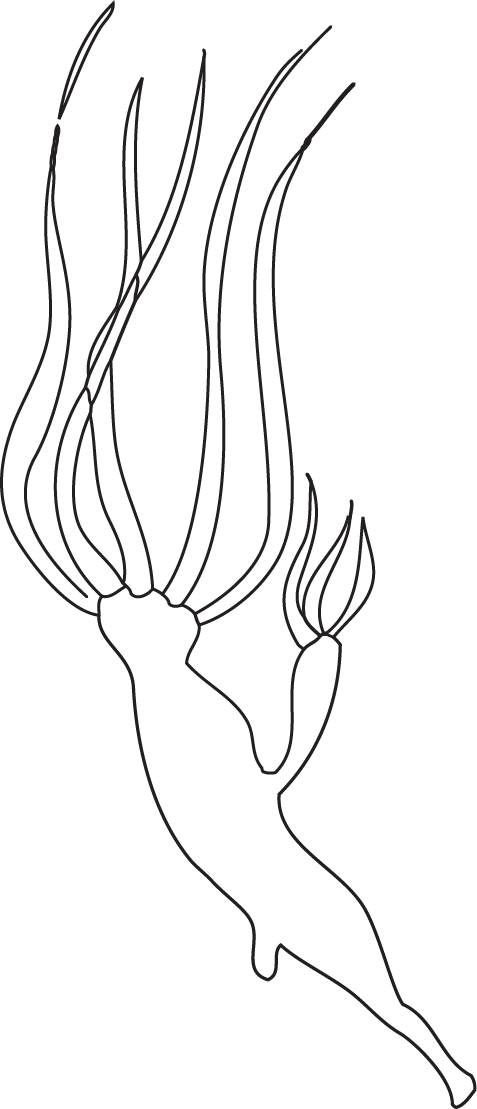Hydra
SCIENTIFIC NAME: Coelenterata
Number Of Species/Distribution
The Hydra is found within inland freshwater systems in Europe, Asia, and the Americas.
There are between 20-30 different species of Hydra.
Hydras are one of the 9,000 species belonging to the phylum 'Cnidaria' which are simple, radially symmetrical invertebrates with tentacles. Other species include coral, jelly fish and sea anemones.
Diet/Feeding
Hydras are predatory; they eat worms, insect larvae, small crustaceans, larval fish, and other invertebrates.
They use their stinging cells to stun, entangle, or kill their prey before eating it.
Some species of Hydra have even been known to sting fish to death.
Habitat
Hydras occur in freshwater, either in flowing or standing waters.
They tolerate a wide range of conditions from depths up to 350 metres in lakes, or in shallow, fast-flowing streams.
They attach themselves to solid surfaces such as stones, twigs, or vegetation.
They do not occur on soft surfaces.
They have a low tolerance to pollution and therefore cannot be found in impaired waters.
HYDRA: INTERESTING FACTS
The tentacles that form a ring around the mouth/anus are covered with stinging cells called nematocysts. These stinging cells can inject toxins upon contact, and are often used for prey capture, defence, and sometimes locomotion.
The Hydras nematocysts are harmless to humans. Nematocysts can only be used once, but are usually replaced within 48 hours
Hydras are generally sessile, but they can detach and move to another location by gliding slowly on their base. Sometimes they somersault, float, or use their tentacles to move along. When anchored, they can also stretch and contract their bodies and bend them from side to side.
Hydras have excellent powers of regeneration after injury. If cut into several sections, a new Hydra will generate from each piece.
The mouth is the only opening to the body cavity, and therefore also acts as the organism's anus.
Life Cycle
Reproduction in Hydras occurs mainly by asexual budding;
A small Hydra grows from the side of its parent and then detaches to live independently.
Sexual reproduction can also occur, triggered by specific environmental conditions;
Hydra can be either hermaphroditic (having both male and female sex organs) or be separate sexes.
Eggs formed by female hydras are left attached to the hydra exposed, while sperm from the male is released into the water for fertilization.
When the eggs are fertilized they become very hard and are released off the mother Hydra. They can withstand freezing and dehydration, and are thought to overwinter this way.
A study carried out by Martanez (1998) suggests that Hydra do not undergo aging, and that there are no apparent signs of decline in reproductive rate.
Sources
Brusca, R. C, and Brusca, G. J., 2003. Invertebrates, 2nd ed. Sinauer Associates, Inc., Publishers, Massachusetts. Page 220 and 256.
Canada's Aquatic Environments (2002). Cnidaria. Available here
Environment Canada (2007). The Freshwater Hydra.Martinez, Daniel E. 1998. Mortality patterns suggest lack of Senescence in Hydra. Experimental Gerontology, Vol. 33, No. 3, Page 217-225.
Vicki J. Martin et al. 1997. Embryogenesis in Hydra. The Biological Bulletin Vol 192, Issue 3. Page 345-363.
Waterwatch South Australia, Environmental Protection Authority (2006). Sponges.



